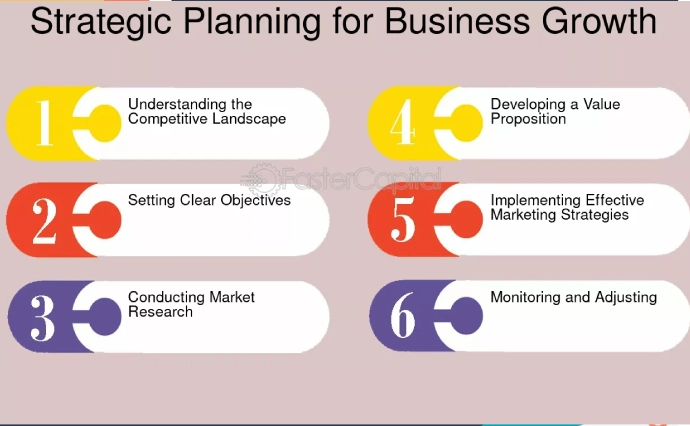Successful Business Planning Planning for success is an important step for every business. A business plan is a guide that shows what the business aims to achieve and how it will grow. Without a plan, it is hard to make good decisions or solve problems that may come along the way.
Why Business Planning is Important
A successful business plan is important because it helps you stay focused on your goals. It shows you where your business is going and how to get there. When you have a plan, you know what steps to take, what resources you need, and what risks to avoid. Business planning helps you think ahead and be ready for any challenges that may come.
A business plan is like a map. Just like how a map shows the best route to reach a place, a business plan shows the steps needed to reach your goals. Without it, a business may lose direction or fail to reach its full potential.
Helps Set Clear Business Goals
One key part of a successful business plan is setting clear goals. These goals are what the business wants to achieve. There are two types of goals: short-term and long-term goals.
Short-term goals are what you want to achieve in the near future, like in a few months.
Long-term goals are bigger and may take several years to achieve.
When you write your business plan, it is important to include both types of goals. This way, you have something to work toward every day, while also focusing on the bigger picture.
Guides Financial Decisions
A successful business plan also helps with making good financial decisions. It shows how much money the business needs to start and run. It includes details about where the money will come from and how it will be spent.
For example, if a business needs to buy equipment, hire workers, or advertise products, these costs are included in the plan. A good business plan makes sure that the business has enough money to cover all its expenses and still make a profit.

Helps Attract Investors
Investors are people or companies that give businesses money in exchange for a share of their profits. They want to invest in businesses that have a successful business plan because it shows that the business has a good chance of making money.
When a business has a clear plan, it is easier to convince investors to give money. The plan shows them how the business will grow and how much profit it can make. This builds trust and confidence in the business.
Prepares for Risks
Every business faces risks. These risks could be changes in the market, new competitors, or problems with money. A successful business planning helps the business prepare for these risks.
In the plan, you should include possible challenges and how to solve them. This way, the business can handle problems without getting off track. Planning for risks makes it easier to recover when something goes wrong.
Setting Clear Goals with a Successful Business Planning
Setting clear goals is one of the most important steps in creating a successful business planning. Goals help guide a business and show what the business wants to achieve in the future. Without clear goals, it’s hard to know where the business is going or how to get there.
In this section, we will explore how setting clear goals can help make a successful business plan and lead to business growth.
Why Clear Goals are Important in a Successful Business Planning
Clear goals are very important in a successful business planning because they help the business stay focused. When a business knows what it wants to achieve, it can create a plan that works toward those goals. These goals guide the business and make sure everyone is working toward the same thing.
Without clear goals, it’s easy for a business to get distracted or confused. A business might waste time or money on things that don’t help it grow. That’s why every successful business plan should include specific goals that are easy to understand.
Types of Goals in a Successful Business Planning
There are two types of goals that should be included in a successful business plan: short-term goals and long-term goals.
Short-term goals: These are things that the business wants to achieve soon, usually within the next few months or a year. For example, a short-term goal might be to launch a new product or increase sales by 10%.
Long-term goals: These are bigger goals that will take more time to achieve, usually over a few years. A long-term goal might be to expand the business to new locations or grow the customer base by 50%.
Both short-term and long-term goals are important in a successful business plan. The short-term goals help the business stay on track day by day, while the long-term goals keep the business focused on the future.
How to Set SMART Goals for a Successful Business Planning
When setting goals for a successful business plan, it’s important to use the SMART method. SMART stands for Specific, Measurable, Achievable, Relevant, and Time-bound. This method helps make sure that the goals are clear and easy to follow.
Specific: The goal should be clear and specific. For example, instead of saying “increase sales,” say “increase sales by 10%.”
Measurable: You should be able to track the progress of the goal. This helps you see how well the business is doing.
Achievable: The goal should be something that the business can actually achieve. It should not be too hard or too easy.
Relevant: The goal should be important for the business. It should help the business grow and succeed.
Time-bound: The goal should have a deadline. This helps the business stay focused and motivated.
Using SMART goals is a great way to create a successful business plan because it makes the goals easy to understand and follow.
Tracking Progress of Goals in a Successful Business Plan
It’s important to track the progress of the goals in a successful business plan. This means regularly checking to see how close the business is to achieving its goals. If the business is on track, it can keep doing what it’s doing. If not, the business might need to make changes to reach its goals.
Tracking progress helps the business stay focused and make sure it’s moving in the right direction. A successful business plan always includes a way to measure the progress of its goals.
Adjusting Goals in a Successful Business Plan
Sometimes, the business needs to adjust its goals. This can happen if the market changes or if the business faces unexpected challenges. A successful business plan is flexible and allows for changes when needed.
When adjusting goals, it’s important to keep them clear and focused. The business should always work toward its long-term success, even if the short-term goals need to change.
Managing Finances with a Successful Business Planning
Managing finances is one of the most important parts of a successful business plan. Without good financial planning, it is difficult for a business to grow or succeed. A successful business plan helps business owners understand how much money they need, where the money will come from, and how they will spend it.
In this section, we will learn how managing finances plays a key role in a successful business plan.
Why Financial Planning is Important in a Successful Business Planning
Financial planning is very important in a successful business plan because it helps the business manage its money wisely. Every business needs to know how much money it has, how much it will spend, and how much it will make. This helps the business avoid running out of money or getting into debt.
A successful business plan includes detailed information about the business’s finances. It shows how the business will use its money to pay for things like rent, equipment, and salaries. With good financial planning, a business can make sure it has enough money to grow and succeed.
Budgeting in a Successful Business Plan
One important part of managing finances in a successful business plan is budgeting. A budget is a plan that shows how much money the business will spend and how much it will make over time.
A good budget includes all the costs the business will have. This could be things like:
Startup costs: This includes the money needed to start the business, like buying equipment or renting a space.
Operating costs: These are the regular costs of running the business, like paying for utilities, employee wages, and marketing.
A successful business plan uses a budget to make sure the business is spending money wisely. The budget helps the business save money where it can and avoid spending too much.
Forecasting Revenue in a Successful Business Planning
Another key part of managing finances in a successful business planning is forecasting revenue. Revenue is the money the business makes from selling its products or services. In a successful business planning, business owners need to estimate how much money they expect to make in the future.
Forecasting revenue helps business owners set realistic goals for their earnings. It also helps them understand if they need to find new ways to increase sales or cut costs. A successful business plan always includes a section that explains how the business will make money and how much it expects to earn.
FAQ:
What is a successful business planning?
A successful business plan is a written document that outlines a company’s goals, strategies, target market, and financial projections. It acts as a roadmap to guide the business toward growth and success.
Why is financial planning important in a successful business plan?
Financial planning helps a business manage its money effectively. It ensures that there is enough cash flow, helps set budgets, and allows businesses to plan for future expenses or investment opportunities.
How does a successful business plan help attract investors?
A successful business plan shows potential investors that the business is well-organized and has clear goals. It provides details about how the business will grow and generate profits, which increases investor confidence.
What are the key elements of a successful business planning?
The key elements of a successful business plan include an executive summary, business goals, market analysis, financial planning, marketing strategies, and risk management.
How can setting goals in a successful business plan help a company?
Setting goals in a successful business plan helps a company stay focused on what it wants to achieve. It provides a clear direction for growth and ensures that everyone in the business is working toward the same objectives.
Why is cash flow management included in a successful business plan?
Managing cash flow in a successful business plan is important because it helps ensure the business has enough money to cover its expenses. Poor cash flow management can lead to financial difficulties or even business failure.
Can a successful business plan be changed over time?
Yes, a successful business plan can be updated as the business grows or as market conditions change. Being flexible and adjusting the plan as needed is crucial to staying competitive and achieving long-term success.
Conclusion
A successful business planning is a must for any business that wants to grow and succeed. It helps set goals, manage finances, attract investors, and prepare for risks. By following a solid plan, a business can stay on the right path and reach its full potential.
setting clear goals is a key part of a successful business plan. Clear goals help guide the business, keep it focused, and ensure that everyone is working toward the same goal. By using SMART goals, tracking progress, and adjusting goals when needed, a business can create a plan that leads to success.


